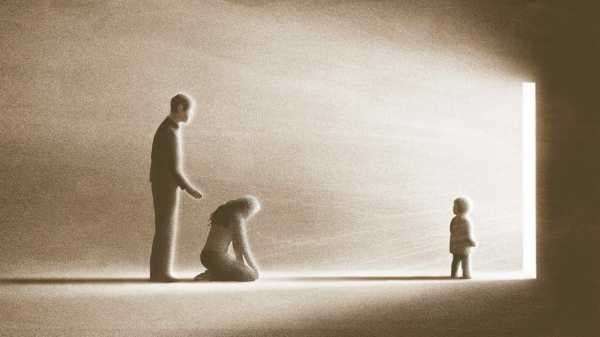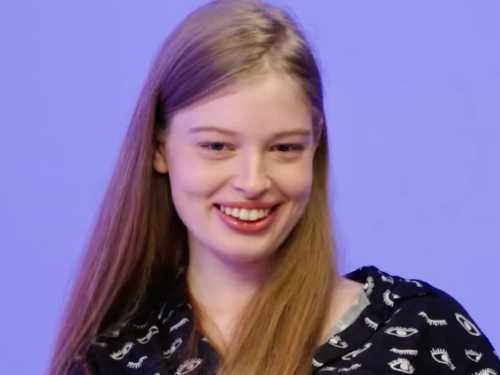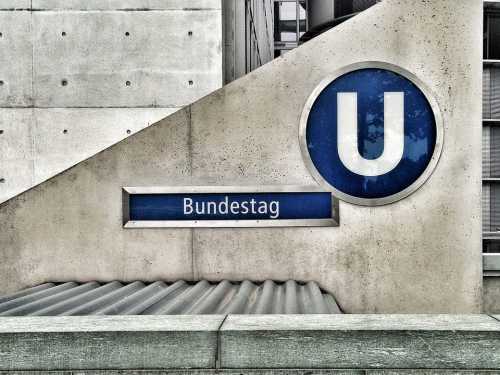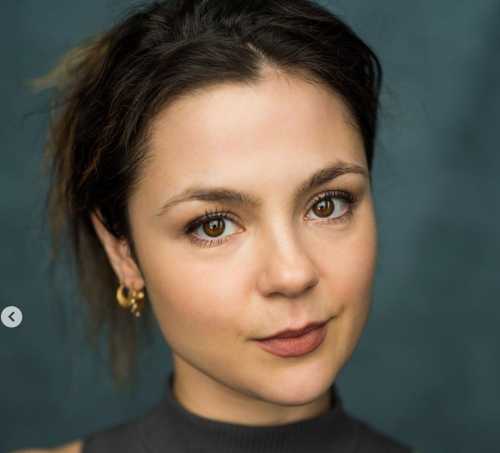
How do we heal the heart? As a historian of religion, I often return to the Gnostic Gospels, an astonishing cache of more than fifty sacred texts, discovered in Egypt, in 1945. Many of them speak to this question: How do we gain the courage to overcome grief and despair? In one story, Jesus’ disciples, after his death, meet a doctor who calls himself a “physician of souls”—the literal translation of “psychiatrist”—who turns out to be Jesus himself. After revealing his identity, Jesus offers his followers a box of ointments and a medicine pouch, telling them to “first heal [people’s] bodies,” and then “heal the heart.”
Since antiquity, people have spent enormous time and energy trying to do just that, whether through faith, medication, therapy, meditation, or physical activity. And though I’ve often grappled with such questions while poring over ancient sources, it was only when I faced an anguish beyond my imagining that they acquired a new, startling intensity.
“Do you have children?”
“No, we very much hope to, but it hasn’t happened yet.”
By the time my friend Mary Beth Edelson, an artist, asked me this question, my husband, Heinz, and I had been married for seven years, hoping, then longing, to be parents. We had been consulting with a fertility specialist for three years, and the painful treatments had created repeated cycles of hope and disappointment. When I told this to Mary Beth, she said, “Let’s do a ritual for you. I only did it once before, but it worked.”
I was surprised and embarrassed, but also intrigued. Mary Beth lived in downtown New York, in a large loft, creating rituals as performance art in which she invited the audience to participate. After reflecting on the offer, and discussing it with Heinz, who found it amusing, I realized I had nothing to lose. Some weeks later, feeling nervous, foolish, and excited, I arrived at Mary Beth’s loft with a few close friends, including the poet Sharon Olds. Mary Beth began by playing the sound of waves breaking on a beach, as we sat quietly, focussing on a large diorama. When the evening darkened, she lit candles and asked me to sit inside a large, hollow sculpture, shaped almost like a birth canal. Each participant, in turn, spoke about giving birth. During the final, intensely focussed moments of our gathering, a sentence formed in my mind, startling me: “You don’t have to do this; it does itself.”
Three weeks later, I discovered that I was pregnant. The following October, on the Sunday morning of the New York City Marathon, we drove to the hospital. We were ecstatic when our son Mark was born. That afternoon, when a nurse took him to do a few routine procedures, I felt ferociously protective. The next day, the hospital’s physicians, concerned about Mark’s heartbeat, ordered an echocardiogram. I sat in the back of the room while they examined the images. I couldn’t hear what they were saying but caught the tone: something was wrong.
When they finally called us into a conference room, they told us that Mark was born with a hole in one of the walls of his heart. Five years earlier, they said, a baby born with this condition invariably died. But, since then, one of their pediatric cardiologists had invented an operation to make a repair, placing into the heart a plastic patch, over which tissue could grow. Since operating on a newborn is especially risky, they advised us to delay open-heart surgery until his first birthday.
We were hugely relieved to leave the hospital, take Mark home, and resume a semblance of a normal life. Mark smiled easily and was growing. At first, he slept in a tiny carrying crib next to our bed, where I often woke to check on him, breastfeeding, holding him close. After six months, he was sleeping in his own bedroom under a mobile of stars. At the time, I was a professor of religion at Barnard, and we usually left the city when the spring semester ended. That summer, we rented a one-room log cabin in a redwood forest, in Santa Cruz. I remember Mark laughing often, especially when his father held him in his large hands. He was excited to learn to stand, first cruising around a low table, then holding on to my fingers with both hands, eager to see the horses grazing in a nearby meadow. In the afternoons, Heinz and I walked barefoot on the beach, stopping to pick up shells and disentangle seaweed from our ankles.
Below those idyllic days were currents of terror. When we returned to New York, in September, we prepared ourselves for Mark’s surgery, which was scheduled for later that fall. When the day came, we held Mark close as physicians injected him with a sedative, then strapped his small body onto a gurney and wheeled him into the operating room. After many hours, one of the surgeons emerged to say that everything had gone well; they’d made the repair. We went to see him in the intensive-care unit, where his slight body was pinned in a dense complex of intravenous needles. I had been ordered not to touch him, lest he risk infection, so I softly spoke to him. When he heard my voice, he lurched his whole upper body toward me, ripping out the needles on one arm. A nurse charged in, shouting, “Can’t you see you’re disturbing him? He’s got to rest; you can’t come in here!” I fled, weeping. I felt, in that moment, that the nurse was right—that I was guilty of causing Mark’s condition. Only much later did I realize the truth: that I’d rather feel guilty than helpless. Standing there, seeing Mark with a huge scar on his thin chest where the physicians had broken his breastbone, we were utterly helpless.
Slowly, during the days that followed, Mark began to take in nourishment, regain some strength. The days and nights, previously indistinguishable, began to take shape again. On the tenth day after surgery, the physicians allowed us to sign Mark out of the hospital and carry him home, wrapped in his favorite blanket. Although pale, he beamed with delight to be back. Heinz stretched out on the living-room floor with him, and they began to build New York City out of bright cardboard bricks.
The spring after Mark’s second birthday, Mark’s cardiologist, who routinely checked the results of the surgery, ordered a cardiac catheterization. The procedure was supposed to take an hour. Nine hours later, the doctors emerged, silent. A nurse summoned us to a conference room. “We couldn’t believe it,” one of the doctors said. “The surgical repair was fine; we thought he was well; but we keep getting the same result. Your son has a very rare disease: pulmonary hypertension, invariably fatal.”
Invariably fatal. I remember nothing else that was said, until finally I asked, “How long?”
“We don’t know; a few months, maybe a few years.”
We resumed life in a universe irrevocably changed. Mark regained his energy, eagerly returning to preschool, where he and his best friend invented elaborate games involving stories known only to the two of them. Mark was excited to begin karate, learning to stand, kick, fight. Mercifully, his illness was invisible. He was thin, but otherwise he looked and acted like other children. When he was three and a half, we made the rounds of interviews for kindergarten. Since Mark’s pediatrician knew the local schools, he agreed with our decision not to tell them of Mark’s condition, lest they treat him like a china doll. I avoided saying, even to myself, “like a dying child.”
Every morning that year looked gray when I woke up. I knew no one whose child had died, and I felt desperately alone. Even the ancients, who so often experienced the death of their children, called it “the unbearable grief.” I asked Mark’s godfather, an analytic psychiatrist, to refer me to a colleague with whom I could talk freely, to avoid inflicting emotional storms on Mark or Heinz. While speaking with the compassionate, incisive man he recommended, I struggled with my powerlessness, which spurred an intense interest in magic. I felt I’d give anything to know how to do it—a spell, a cure, a bargain with invisible powers. How could we go on living, having no control over what mattered most?
Heinz and I fervently hoped for more children, but, after a miscarriage, we began to talk with a priest at the Church of the Heavenly Rest in New York about adopting a child. He told us of the Gladney Center for Adoption, in Texas. The agency agreed to consider us, and we flew down to Fort Worth, where we talked to six birth mothers and began the arduous application process. At the end of May, a social worker called to invite us to meet a baby girl, just born, who their counsellors felt would be a good match for our family. Because she had been born prematurely, we were told that we’d have to wait until her due date, over two months later, to bring her home.
Back to the cabin in California, to the horses, the meadows, the ocean. One night, after dinner, Mark told me he’d dreamed that we were going to leave him in the cemetery that we drove past every day on our way to the ocean. I froze. Heinz and I had agreed that we’d answer questions about his condition as directly as possible, but that we would not initiate talk about dying. As Mark described the dream, we made a drawing of it together. He drew grass, gravestones, and crosses, one with a stone angel on top.
Talking with Mark about his dream, I felt apprehensive about the adoption. Could it suggest that we were preparing for life without him? The three of us held each other especially close that summer, spending hours in the tree house in the redwoods, and, in the afternoons, wandering by the ocean, marvelling at the tiny crabs in the tide pools. Mark was thinner than ever, but I tried not to notice, and mostly succeeded. Days before we left, his gray parrot, who every summer for three years had gloried in sitting in the apple tree each morning, flew away. Mark was devastated. We looked and called for him all afternoon, until long after dark, but we never found him.
Shortly after we returned to New York, the adoption agency called to tell us that we could bring our daughter home. The three of us flew to Fort Worth, carrying a bag packed with baby clothes and blankets. At the hospital, the social worker invited Mark to be the first in our family to see his new sister. He returned, smiling and proud, helping to carry the baby in a small carrier. We’d already decided on a name, but, seeing her, we realized that she would be leaving everything familiar to her, and it would be wrong to add any changes that we could avoid. We asked what they had been calling her. “We call her Sarah,” the social worker said. Heinz and I looked at each other and nodded; we liked the name. “She must be used to her name: Sarah,” I said.
Mark was eager to go back to school, where, with his teacher and his classmates, he was building a six-foot wooden airplane in the woodworking shop. In October, we had to postpone his birthday party, since he wasn’t feeling well—but he recovered. We often took him and Sarah on weekend adventures—most often to the Museum of Natural History, to see the dinosaurs, the giant squid, the jewels, and the planetarium’s dazzling skies. Sarah was growing, laughing, babbling in her own language. She would scoot across the expanse of Oriental carpet and grab Mark’s toys, the two of them playing and squabbling, inseparable siblings.
Two days before Christmas, Mark said he felt too sick to eat, and Heinz took him to the pediatrician. When they returned, Heinz’s face was ashen. He signalled that we needed to talk. Our friend was there to care for the children, so we left and drove downtown. Heinz told me what our pediatrician had said: “You should be prepared for a sudden demise. But don’t tell your wife.” Park Avenue was brilliant with thousands of crystal Christmas lights, and through the tears I felt every one of their points stabbing like needles. That evening, after Heinz told Mark his bedtime stories, I went in to sing to him until he fell asleep. This time, he clung to me, arms around my neck, and said, “I’ll love you all my life, and all my death.” I stayed with him until he went to sleep, then walked into the living room. Heinz and I sat close, holding each other, shaking with silent sobs.
I called his cardiologist the next day. When we arrived at her office, the nurse came in to draw blood. I was holding Mark on my lap. After she inserted the needle and left the room, he stiffened, and his eyes rolled up. I ran down the hospital hall holding him in my arms, calling for help. Within two or three minutes, six or seven physicians converged in a treatment room, placed Mark on a table, and worked to revive him while I stood over him, holding him close, and speaking to him in a steady, reassuring voice. At a certain moment, I sensed that his life was leaving his body, and the intimate connection we’d shared seemed suddenly to break. Moments later, when his cardiologist arrived, I turned toward her and fell down, losing consciousness. Then I seemed to be in a brilliant place, vividly green, with golden light.
When I came to, I was in another room. A doctor had revived me with smelling salts. I opened my eyes to see Heinz arriving in great haste, crying, “Oh, it’s over, it’s over.” At that moment, I somehow felt that Mark could hear us; I sensed his presence near the ceiling of the room. Heinz and I sat together, clasped tightly, and spoke to him. The cardiologist came in, and told us that Mark’s heart had stopped, and then started beating again. We went to his room and held him; but he did not regain consciousness. Shortly after that, the heartbeats stopped. We stayed in the same room for six or seven hours. His body and features changed, as death took them over. After midnight, we walked out of the room, down the corridor, and out the back door of the hospital.
Although we’d heard that many couples separate after the death of a child, Heinz and I drew even closer, and closer with Sarah. We were surprised to admit to each other that in our devastation, we also felt some relief. The sword hanging over our lives had fallen; what we’d most dreaded had happened. Still, when well-meaning friends tried to soften our grief, speaking of “the loss of your son,” I inwardly froze, then flashed with anger. I didn’t lose my child, like a mother distracted while shopping: he died! Yet beneath the anger ran an electric current of guilt. Wasn’t protecting Mark’s life our primary responsibility? Hadn’t we failed as parents?
Suffering feels like punishment. That’s one reason why people still tell the story of Adam and Eve, which suggests that human choice—the choice to sin—brought death into a once perfect world. Biblical stories often imply that those who die in a natural disaster, or through catastrophic illness—even children mauled to death by wild bears, for making fun of the prophet Elisha’s baldness—are suffering exactly what they deserve. Over two thousand years ago, Israel’s greatest prophets—Amos, Isaiah, Jeremiah—interpreted their peoples’ defeats in war as punishment for failing to worship God.
This notion of suffering offers the illusion of control: if we believe that our pain is a form of punishment, then that pain isn’t meaningless. We can respond by atoning—with prayer, with sacrifice, with self-abasement. We can retain some sliver of agency. When Mark was diagnosed, I sometimes felt as if I’d caused his illness. Although I wasn’t a traditional believer, and didn’t take religious stories literally, somehow their premises had shaped my subconscious. Now I had to divest myself of the illusion that we deserved what had happened.
In this I was helped, in part, by my work, and especially by the Gnostic Gospels found in Egypt. One of them, the Gospel of Truth, bypasses the notion of suffering as punishment. It suggests, instead, that such experiences show how we’re connected with each other, and with God.
This is what I felt at the service for Mark, as we embraced friends at the back of the church. They had come from all parts of our lives—those close to us, those we hadn’t met for years. I was grateful to see them, although I also felt strange, as though we were walking naked in public. Standing there, I had a vision of a vast net of thick ropes, with enormous spaces between the knots. Heinz and I had found no meaning in our son’s death. The most that we could do was create meaning, by caring for each other and for our daughter. As we walked out of the church that day, I had the sense that those knots were our connections with those we loved, and that nothing else could have held us in this world.
This essay was drawn from “Why Religion: A Personal Story,” which Ecco will publish on November 6.
Sourse: newyorker.com






